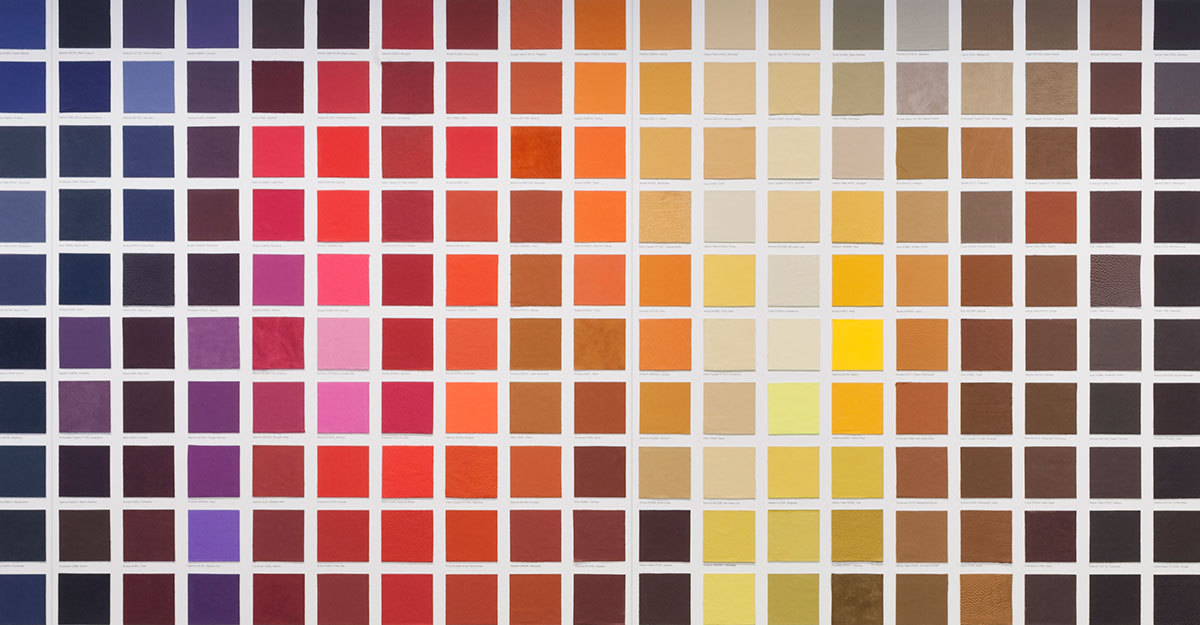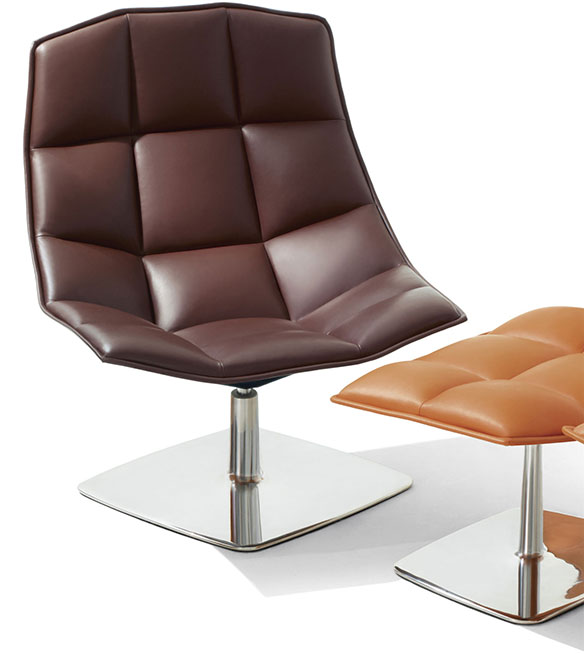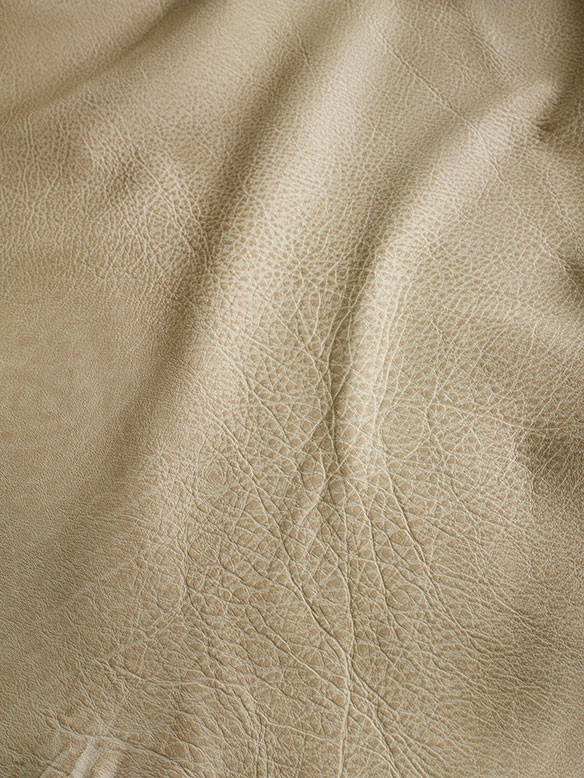
About Leather
Leather is an ancient, durable material created through a process of tanning animal rawhide to preserve it and make it pliable when dry. Many features of natural leather make it superior to synthetic products including durability, comfort, beauty, suppleness, and resilience. In addition, leather’s ability to patina and absorb body oils continues to enhance the appearance and makes it more beautiful over time.
History
Leather tanning is one of the oldest human activities. Primitive man hunted animals for food and used the hides for shelter, clothing, and footwear. Unfortunately, the skins became stiff at low temperatures and decayed with heat so a form of preservation was needed. Early forms of tanning involved rubbing in animal fats as the hide dried but this method provided limited preserving and softening. Later processes included smoking, formaldehyde tanning from burning green leaves and branches, drying in the sun, and dehydrating with salt but all had their limitations.
Vegetable tanning, otherwise known as bark tanning, with the tannin contained in tree bark created a durable, water repellent leather with large thick hides such as cattle, horse, buffalo, and pig. Tannins are natural compounds found in plants with antioxidant properties that assist in growth regulation. Though there are multiple theories on the origin of vegetable tanning, the modern form was most likely developed in ancient Egypt, Rome, and Greece. The earliest known example of vegetable tanning comes from Gebelen, Egypt, about 40 kilometers south of the Thebes on the Nile River, at a tannery thought to be over 5,000 years old.
Early leather was used for footwear, clothing, and military equipment including shields, saddles, and harnesses. Large quantities of leather articles including footwear and clothing have been discovered at Roman sites throughout Great Britain. A record of these early leathers can be found in Homer’s Iliad (set in 1,200 BC) where the god Ailos gave Odysseus a leather bag filled with storm winds to help him reach Ithaca. Vegetable tanned leather was an important tool in the development of civilization as it provided a durable, strong material that was pliable and it was heavily traded throughout Europe, North Africa, the Middle East, and India.
Tanning methods gradually became more refined and efficient and the Industrial Revolution created a demand for new kinds of leathers such as belting leathers to drive machinery. In addition, the demand for softer, lightweight footwear and a general rise in the standard of living created a demand for supple, colorful leather. The traditional vegetable tanned leather was too hard and thick for these requirements and thus the use of chromium salts was adopted and chrome tanning became the norm for modern footwear and fashion leathers.


Types of Leather
Leather can broadly be divided into full grain (naked), top grain, enhanced grain, corrected grain, and split leathers. Full grain (naked) leather has no surface alterations. The hide’s natural pores and grain textures are intact and it will develop a patina over time. Enhanced is a full grain with an artificial grain embossed over the natural grain. Corrected grain leather is produced from the upper portion of the hide and the surface is lightly sanded or refined and embossed with an artificial grain texture. Top grain leather is produced from a split. The surface is heavily pigmented and embossed with an artificial grain texture. Split leather is created from the fibrous part of the hide left once the upper portion of the rawhide has been separated from the hide.


Full Grain versus Top Grain Leathers
Spinneybeck full grain leathers are superior to top grain leathers.
They are stronger. Full grain leathers have greater tensile strength and are less likely to ‘puddle’ than leathers which have lost the surface layers. Top grain leathers have had the upper portion of the dermis removed therefore losing the strongest, tightest, and most dense part of the hide. They are not as strong as full grain leathers and will permanently stretch over time. Whereas properly maintained full grain leather will never look worn and will outwear textiles and top grain leather many times over. Since fabrics are woven, changes in their appearance from age and use detract from their beauty. Leather will absorb body oils during use and enhance the leather's appearance over time. This improvement in appearance is called patina and it’s a unique characteristic of natural leather.
They are more comfortable. Full grain leathers breathe and ventilate body heat away from the body, allowing them to remain cool and comfortable in summer while not becoming cold and rigid in winter. Conversely, top grain leathers have their surfaces clogged with heavy applications of finish and will not wick away heat. In addition, they feel artificial as silicone-based fillers are used to patch holes and deep barbed wire scars and does not adjust to your body temperature nor wick away moisture.
They are more beautiful. Full grain leathers produced from the highest quality of raw materials have depth of color and require less finish, allowing their natural markings to show.
They are more supple. Full grain leathers are natural, supple, and provide a robust hand. This natural characteristic adds to the luxury, value, and comfort of the leather and is not evident in lower grade top grain leathers.
They are longer lasting. Full grain leathers, which have all of their natural properties intact, will breathe and will maintain high moisture content and a proper pH balance. Top grain leathers receive heavy applications of finish which seal the surface. The pore structure is removed preventing the leather to breathe.
They have a larger hide yield. An average of 80–90 percent yield per hide provides a lower waste factor than top grain corrected material meaning less square footage is required and a lower waste factor for cutting patterns.
Characteristics of Full Grain Leather
No matter how advanced the tannery, each and every piece of leather produced is unique in character. A quality hide’s natural origins are displayed on its surface. Look for these essential characteristics of full grain quality:
- Fat wrinkles or growth lines as subtly shaded bands on the grain side of a hide
- Natural variations in grain texture and shading
- Small scars since on a quality product they do not render large portions of the hide unusable
- A similar shade of color on the suede side demonstrates superior base dye penetration
- The depth and shading of color on the grain side is comparable to that of a transparent color stain on a piece of fine hardwood furniture
Choosing full grain leather is the smart, long-term solution if comfort, quality, and durability are important.